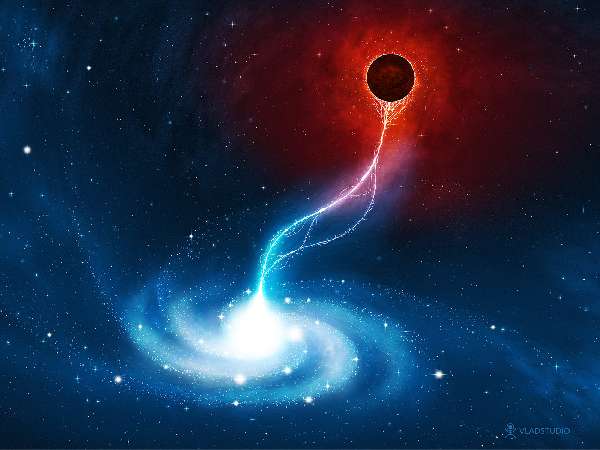New Class of Black Hole discovered?  An Artist's Representation of a Black-Hole |
290 million light-years away from our planet, a magnificently bright stellar object could just be a new type of black-hole. Christened the HLX-1, it could be the best candidate to prove the existence of a certain class of black-holes.
A black-hole is a point in space-time where the space-time curvature is infinite. At this point, all laws of science are assumed to break down. It is of infinite density and exercises a very strong gravitational force that can even suck energy in the wave-form and prevent it from escaping its gravitational field as it passes by. Because of this, light that is shone on a black-hole does not reflect back as it is sucked into its centre of mass. Theoretically this renders black-holes invisible, but matter that falls into a black-hole tends to heat up and shine brightly which helps in identification of the black-hole. Noble prize winning scientist, Stephen Hawking was the first to theorise the existence of such oddities in the space-time curvature.
So far, black-holes are either of two types: small stellar-mass black holes that are 20 to 30 times the mass of our sun or super-massive black-holes thought to sit at the centre of most galaxies that are millions or billions of solar masses in size.
The findings were published by astronomers with the Centre d’Etude Satiale des Rayonnements in France.
Previously it was believed that black-holes can be either of the two classes; there is no in-between. This is understandable as small black-holes, when increasing in size by sucking in-coming matter will reach a point where the ‘push’ of radiation of the in-falling matter equals the ‘pull’ of the black-hole’s gravity.
Theoretically these ‘in-between’ black holes could exist but proving them has been hard as many are so bright that it is hard to confirm whether they have companion stars. Companion stars are near-by stars that provide black-holes with the fuel they need. Black-holes constantly suck matter from these stars.
Another way of detecting such galaxies is by looking at the iron emissions that appear distorted by the odd gravitational effects of matter falling into the black-hole. However, the current generation of telescopes is not sensitive enough to detect such emissions.
These middle-weight black-holes could form inside dense globular structures where they would collide and merge with other objects apart from sucking in surrounding gas and stellar dust.






